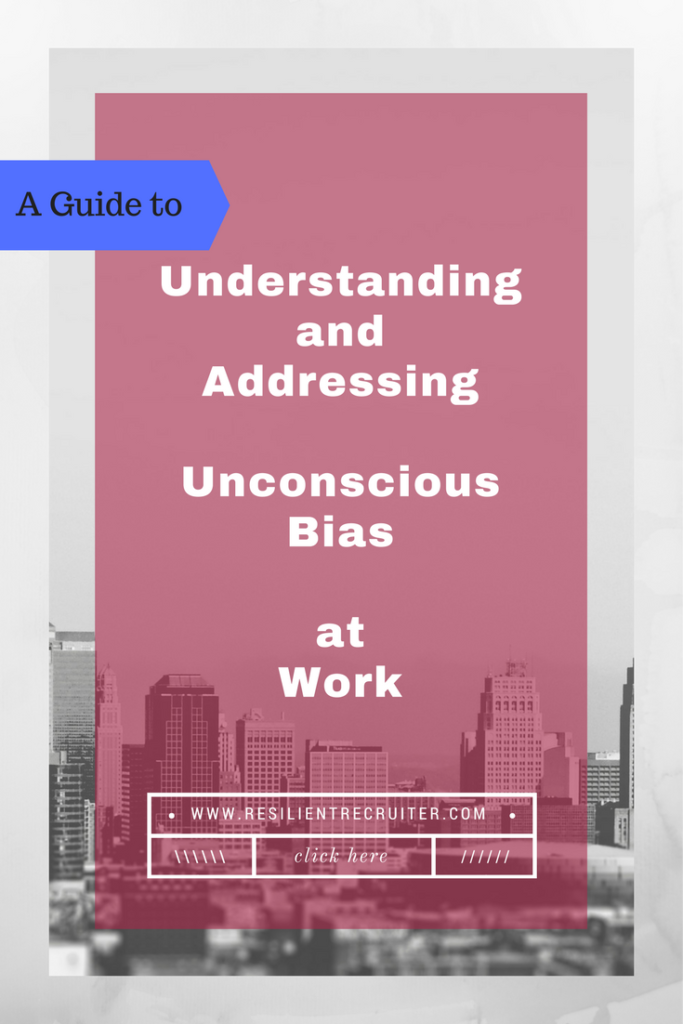Most of us make dozens of decisions every day without a second thought: both personal and professional. Those decisions dictate everything from what we eat for breakfast to how we deal with customers, to who we do (or don’t) hire. Yet, we don’t give a great deal of thought to WHY we make the decisions that we do. Yet, most of those decisions rely heavily on our unconscious bias.
What Exactly IS Unconscious Bias?
Put simply, unconscious bias is how we perceive the world around us and make decisions accordingly. There are many elements that factor into our individual unconscious bias:
- How, or where we were brought up
- How we were socialized during our developmental stages
- Our exposure to social identities or groups
- The friends we associated with (or still associate with)
- Media influences that we identified with
All of the above examples can have a significant effect on the way we perceive people, groups, or situations in general. They affect our everyday lives, and carry over into our business decisions. They can play a part in creating company culture, but that isn’t always positive! Many people are unaware that they display biases in the workplace, and that those very biases can have an effect on the way they perform their jobs, and ultimately, their success level.
What Does Unconscious Bias Affect?
The way we perceive the world around us has a profound impact on our lives, and the lives of those we work with. Both men and women have engrained expectations of workplace roles, and those expectations do not appear to be changing overnight. It took many years to form the norms and expectations that exist today, so it will take just as many years to obliterate those opinions or perceptions. Consider several of the following situations:
Appearance: What aspects of a person do we immediately pay attention to? Are we more likely to perceive an attractive person as someone that is more successful, or are we just willing to give that person the chance that we may not have given his or her less attractive counterpart? 60% of the CEO’s in the United States are over 6 feet tall, yet only 15% of the total population is over 6 feet tall. 36% of those CEO’s are over 6’2″, yet only 4% of the population exceeds that height. Does bias play a part in perception of power or authority? You be the judge! It has long been speculated that height was positively correlated with perception of power or strength, and the numbers don’t lie.
Empathy: This involves how much comfort or compassion we feel toward people in varying situations. We often think of empathy in personal situations, but it exists just as strongly in the workplace. Do you feel compassion toward customers, employees, or supervisors that you are better able to relate to? If one of your closest colleagues was reprimanded for sub-standard performance, would you feel more compassion for him or her than another person in your department that you have nothing in common with, or cannot relate to personally? People tend to react in a warmer, and more empathetic manner with those they can personally relate to.
Level of Attention: How we perceive an individual in the workplace has a direct effect on how we react toward them. This will involve how intently we listen to what he or she has to say, or how we react to the individual’s opinions. A person that is perceived as one commanding respect is often received with much more attention. For example, an individual who comes from a prominent family, or was educated at a prestigious school is often given a different level of respect than someone that came from humble means, regardless of his or her professional contributions or ambition. It is often referred to as the “halo effect”. The opposite exists as well. An individual that may deserve just as much respect does not receive it for not possessing the credentials that the first person has. This is considered the “horn effect”.
What Can We Do to Counteract Unconscious Bias?
Based on the above examples, it is apparent that unconscious bias plays a part in every decision we make, which can be disastrous in a business setting! Society has been conditioned, over decades, and change will take time. The first step a company can take is recognizing that bias exists with everyone. It has played a part in every employee’s development as an individual, and reflects his or her strengths and core values. As leaders, some steps can be taken to identify and recognize the bias that exists within their walls.
- Have employees practice conscious awareness.
Allow employees to be introspective and examine their background and identities, recognizing and confronting their own internal biases, making conscious decisions to look beyond them.
-
Focus on people, not stereotypes. Some companies have established the practice of stripping resumes of names and addresses, and assigning them numbers. This has allowed many companies to consider candidates they may not have selected to even bring in for an interview. The exercise has been very eye-opening, as they have realized that many hiring managers had a pre-conceived perception of the person they thought they would want to hire for the role.
- Increase Exposure to Biases: Companies are holding “bias acquaintance” sessions with their managers and senior leaders, and making efforts to institute mentoring programs for underserved groups that are identified.
- Recruiting and Interviewing training for hiring managers. Develop proactive processes that recruit diverse populations and train managers on ways to interview effectively.
What is your organization doing to counteract unconscious bias? Have you taken steps to recognize it?
Understanding how to attack bias within your company is critical. Bias in the workplace is the foundation of perceived discrimination, which in turn, is counterintuitive to any engagement and recognition efforts that are being enacted. Understanding yourself, and what makes you – and your employees – who they are, is the necessary first step to creating a cohesive work environment, and saving your company money in the long run.
Please refer to the following books for more information on Unconscious Bias:
Everyday Bias: Identifying and Navigating Unconscious Judgments in Our Daily Lives, by Howard J. Ross
Blind Spot: Hidden Biases of Good People, by Mahzarin R. Banaji
Hidden Bias – How Unconscious Attitudes on Diversity Undermine Organizations and What to Do About It, by Gerard Holder
by Natalie Lemons
Natalie Lemons is the President of the Resilience Group, LLC, and the author of The Resilient Recruiter. Please follow her blog for more articles like this, plus helpful free downloads for recruiters or those starting a Recruiting business. Resilient Recruiter is an Amazon Associate.



This is really interesting. I think a lot of people these days work really hard to not be biased but I’ve never thought about the unconscious part of it.
Great article! However I must say that the truth begins with the persons self awareness of their own ignorance before they can truly counteract anything unconscious. It’s like people say children are not born with hate in their heart it is taught over years of exposure as you pointed out, so many people don’t even know until they are faced with something that goes against their teaching how wrong they truly have been for so many years.
These are great tips for recognizing bias!
I’m not in the working world anymore, but these are great tips! It’s a shame that we still put so much emphasis on appearances rather than trying to get to know the person.
Very informative and well written. So many of these biases occur without us even realizing it. Thanks for the info!